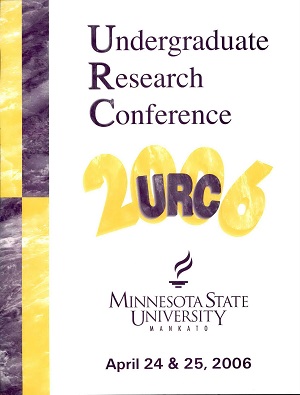The Effects of Internal Curing on the Properties of Concrete
Location
CSU 284
Start Date
24-4-2006 1:30 PM
End Date
24-4-2006 3:00 PM
Student's Major
Mechanical and Civil Engineering
Student's College
Science, Engineering and Technology
Mentor's Name
W. James Wilde
Mentor's Department
Mechanical and Civil Engineering
Mentor's College
Science, Engineering and Technology
Description
There are many factors affecting the properties of concrete. This project focused on the effects of using different water-retaining fine aggregates on the properties of concrete, while keeping all other factors controlled. The main objective of this project is to determine what effects water retaining aggregates have on concrete, as opposed to traditional fine aggregates (sand) which have negligible water retention capabilities. Particular emphasis is placed on the shrinkage properties of concrete. All methods, materials and equipment used for testing conformed to the American Society of Testing Materials (ASTM) standards or to the American Association of State Highway and Transportation Officials (AASHTO) standards. Testing has indicated a positive result for shrinkage with significantly lower shrinkage over time when using water retaining fine aggregates to replace small proportions of traditional fine aggregates. Testing has also indicated, however, that there is a corresponding negative impact on the strength properties of the concrete when using water-retaining fine aggregates. The significance of either depends upon the intended use of the concrete. If strength but not shrinkage is a concern, water-retaining aggregates may not be warranted, however if shrinkage is a major concern such as in transportation construction, water retaining aggregates may produce a positive impact on the quality of the system.
The Effects of Internal Curing on the Properties of Concrete
CSU 284
There are many factors affecting the properties of concrete. This project focused on the effects of using different water-retaining fine aggregates on the properties of concrete, while keeping all other factors controlled. The main objective of this project is to determine what effects water retaining aggregates have on concrete, as opposed to traditional fine aggregates (sand) which have negligible water retention capabilities. Particular emphasis is placed on the shrinkage properties of concrete. All methods, materials and equipment used for testing conformed to the American Society of Testing Materials (ASTM) standards or to the American Association of State Highway and Transportation Officials (AASHTO) standards. Testing has indicated a positive result for shrinkage with significantly lower shrinkage over time when using water retaining fine aggregates to replace small proportions of traditional fine aggregates. Testing has also indicated, however, that there is a corresponding negative impact on the strength properties of the concrete when using water-retaining fine aggregates. The significance of either depends upon the intended use of the concrete. If strength but not shrinkage is a concern, water-retaining aggregates may not be warranted, however if shrinkage is a major concern such as in transportation construction, water retaining aggregates may produce a positive impact on the quality of the system.
Recommended Citation
Henkensiefken, Ryan and Michael Krause. "The Effects of Internal Curing on the Properties of Concrete." Undergraduate Research Symposium, Mankato, MN, April 24, 2006.
https://cornerstone.lib.mnsu.edu/urs/2006/oral-session-E/3



